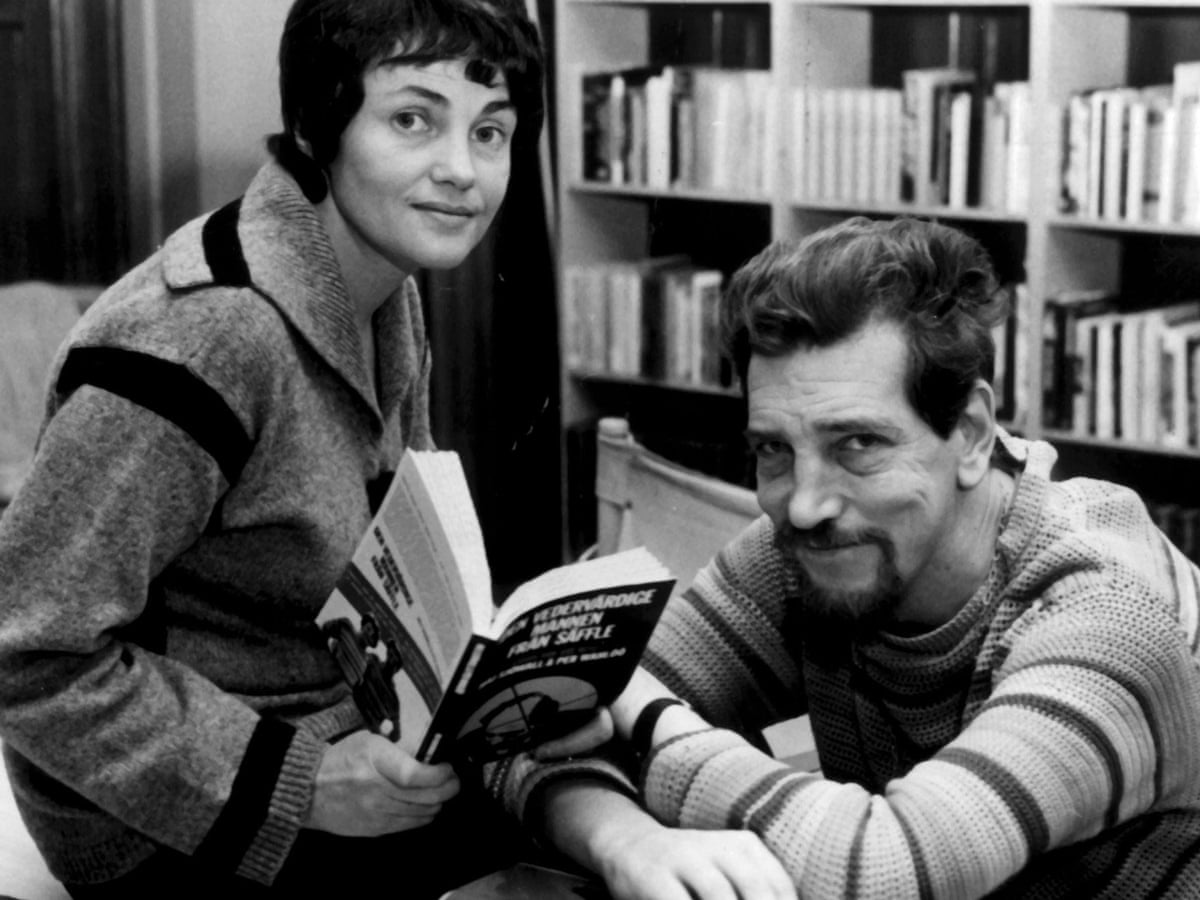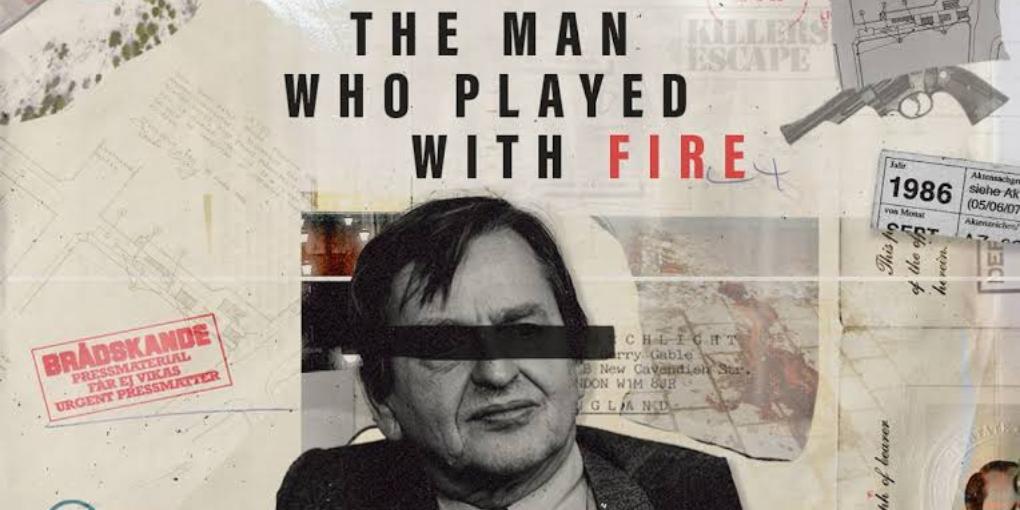These are the first sentences that introduced readers from all over the world to Martin Beck. This July is the July of 1965. And at that time Martin Beck, who became commissar in 1951 when he was 28 years old, is on duty at Stockholm Homicide Desk. He’s been married since 1951, the year he became commissar, and he has two children. Although he is unhappy with his wife Inga’s almost stingy prudence and continuous complaints, he does nothing to change this situation. Year by year we see that Martin Beck, who doesn’t intend to divorce since he doesn’t want his children to get disordered, works more and more so as not to go home. He never says no to visit another city or country to solve a case even if it is not that much important, he buys a couch at the 17th year of his marriage and starts to sleep – peacefully – on it “so an not to bother his wife”. On the other hand , we can say that Martin hasn’t thought hard on his marriage and his own wishes. Maybe if he had a little more time for himself, he could really have decided what he wanted to do. However, Martin Beck is literally a man of duty. He is one of these meticulous cops who can’t sleep without closing a case, who relies on his intuition and investigates every detail even if it prolongs the work… He is a man who usually forgets to eat, who sometimes drinks cups of coffee until it makes him sick. He is a man who smokes more cigarettes everyday although he always agrees with his wife telling him that he should quit smoking. He is a man who sleeps slightly, and sometimes forgets taking a rest. He is a man who has his best sleep during the long train journeys between his workplace and home rather than his own home.
Martin Beck is one of the best query specialists in the city. When you read this, don’t suppose that he’s a police officer who tries every way, including violence, to make people talk. After weighing the other completely, Beck asks his questions calmly and usually kindly, without having to think fast, giving time, but often pursuing all the details that are thought to be disconnected to the case. Such a calm and able interrogator couldn’t be written in any other detective novel, I presume.
Larsson, Kollberg and Melander
To know Martin Beck better, we also needed to follow his colleagues and his communication with them. Gunvald Larrson, whom Martin usually finds lazy and annoying, isn’t among the guys he likes. But when it comes to Kollberg and Melander, it’s not the same. Martin and Kollberg are able to communicate without even speaking since they’ve worked together and been honest to each other for a long time. From a glance or a stance, they extract what the other one thinks. Kollberg, who is at least as meticulous, successful and observant as Martin, is a bit more energetic and talkative than Martin. If there’s anything to compete with the pleasure-read query scenes in the entire series, it’s probably the pages where the dialogues of Martin and Kollberg flow.
Let’s not forget Melander, who is unhappy when he doesn’t sleep for 10 hours a day, and is often thought to be at the toilet when he doesn’t sleep or work. Imagine a google without false information, here is Melander: The exact equivalent of it in the 60s. With his great memory and attention, he forgets almost nothing. Even a name mentioned in a case years ago… And the marshal Hammar is a calm man who doesn’t like politicians, focuses on policing, and often ponders with his team.
How Did the Series Start 55 Years Ago?
Per Wahlöö, born in 1926, and Maj Sjöwall, born in 1935, met when they were working in a magazine affiliated with the same publishing company. When they met, Wahlöö was a Communist Party member and a respected journalist. Sjöwall was an editor and art director. They started living together a year after falling in love. They both liked to read crime fiction. Georges Simenon and Dashiell Hammett were their favorite writers. They began to discuss writing a crime series together. “We wanted to define society from our leftist perspective. Per had written political books before, but they had sold a maximum of 300 copies. We realized that people like to read crime fiction, and we could convey the concepts of poverty, crime and brutality underlying the image of Sweden’s welfare state through crime fiction novels, and we could make people think about these issues. We wanted to show that Sweden is moving towards a cold and inhuman capitalism, where the rich get richer and the poor get poorer,” Sjöwall says in an interview.
In 2009, Louise France from The Guardian newspaper met Sjöwall and talked in detail on how the Martin Beck series emerged and their working methods with her husband. France cites:
“It is one of the most remarkable collaborations about writing in publishing history. A man and a woman, a couple, are sitting at the same table to write every evening – after taking care of the meal and putting their children to sleep… The woman has never written a book before, the man has published books, but they both work in this way for the first time. If necessary, they write all night long. They both write different chapters, and continue to write by exchanging the chapters the next evening. One begins a chapter, the other ends it. As the chapters progress, they become the editor of each other. They don’t argue, at least about words and sentences. They continue to write with great harmony, as if they complete each other naturally and comfortably…”
As an editor who works with writers and also writes herself too, I can’t go without saying that this is really amazing! A series of 10 books completed in 10 years, with the goal of completing a book every year, to write only during the remaining time from all their work and children, in the evenings, sometimes until the morning… 10 novels of the Martin Beck series have a total of 300 chapters. Writing these 300 chapters alternately, being the editor of each other… It’s a tremendous harmony and an incredibly difficult way of working. As France stated, it is really one of the most memorable and remarkable writing collaborations in the history of publishing.
Sjöwall says they worked hard on the series’ format and language. When they started to build the first novel, their goal was to write a series which can be understood by all Swedes, either educated or uneducated, but also to write a series as fluent and critical as possible. It’s possible to say that they have reached more than what they had targeted after seeing how many people read the series for 55 years. Many young people, not only in Sweden but in many countries, get the books from their parents’ bookshelves and say that they loved reading thanks to the Martin Beck series. “This is much more important to Sjöwall than sales, perhaps because of her Marxist origins,” says France.
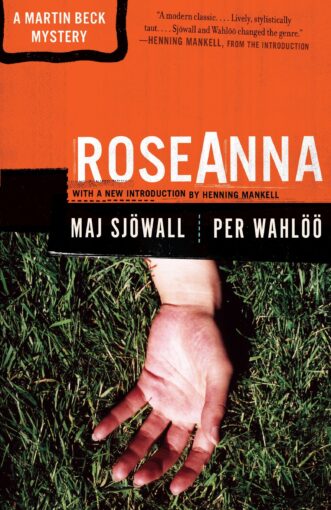
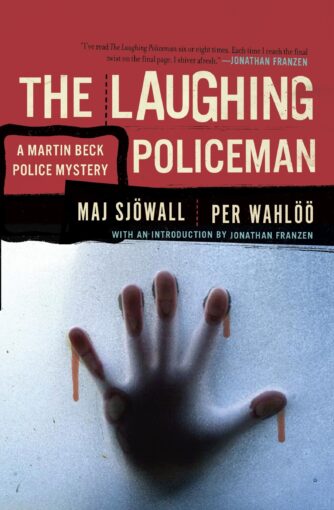
While writing the 6th book of the series, Per Wahlöö suffers a serious illness; tests, diagnosis comes after it… Different treatment methods, being tried for 4 years. One day Wahlöö sneaks into the professor’s room, reads his notes, and learns that he was going to die. They rent a house in Malaga immediately and go there. Mostly Per Wahlöö writes the series’ last book, The Terrorists, while Sjöwall edits it quickly. He continues writing with all the pain he suffers, even if he looks like going is about to die. The couple returned to Sweden from Spain in March 1975, immediately delivering the last novel to the publisher. In June, Per Wahlöö passed away without seeing that the Martin Beck series has been adapted to movies and series countless times and published in dozens of languages.
From a Channel Trip to a Detective Called “Kafka”
The writers didn’t know what to tell in the first book when they decided to write a crime fiction series. They were on a boat from Stockholm to Gotenburg. A beautiful American woman standing alone was also on the boat. Sjowall saw Per staring at her and said, “Why don’t we kill this woman to start the first novel?”
Well, it is the story behind the first Martin Beck novel. In July 1965, a woman’s body was found on the channel. This woman, whose identity was determined with difficulties, is a tourist from the USA: Roseanna McGraw. Martin Beck learns where the woman lives, her profession and other personal details by calling and exchanging letters with his colleague Kafka from the USA. The woman is a person working in a library, living alone, devoted to her independence, and reading a lot.
Obviously, the investigation doesn’t take place in today’s conditions. There is no internet, no mobile phones, it is not possible to compare clues with DNA analysis. More efforts and more patience are required to solve a mysterious murder in 1965. While the investigation continues for months, Martin Beck and his team examine hundreds of travel photos, try to reach tens of people who have returned to different countries after traveling with the victim, and try to find the killer after all these meticulous work… Nothing is as fast as today’s crime novels. Could the series be regarded as a little more impressive just because of this?
On the Streets of Budapest in 1966
In the second book, the writers take us to Budapest this time, and the year is 1966. The Soviet Union is still there, as well as East Berlin, People’s Republic of Hungary, Yugoslavia…
Swedish journalist Alf Matsson, 32, works as an East European reporter / writer in a poorly qualified weekly newspaper. He often travels to the Eastern Bloc countries and makes interviews with sportsmen and artists there. One day Matsson goes to Budapest to report news again, but nobody can hear from him anymore. In order to prevent a diplomatic crisis about this journalist from whom not a word has been heard for a week, the Ministry of Foreign Affairs assigns Martin Beck. Martin Beck flies to East Berlin, from there to Prague and finally he arrives in Budapest… He checks in at the hotel where the missing journalist was staying and starts investigating. This is a delightful crime novel where you can witness the streets of Budapest in the summer of 1966, and the city’s delicious food and what tourists do in the city.
The tense relationship between Commissioner Szluka from Budapest Police Station and Martin Beck gets more interesting as the pages go on. I guess there are very few crime fiction novels where you can read a detective getting overwhelmed by the heat, getting in and out of the shower, changing his clothes, and the details of the meals he eats three times a day, not being able to convince himself about the reasons for being in that city, and hanging around without doing anything for pages without getting bored. The Man Who Went Up in Smoke is a novel that you can taste and travel around the streets of that old world alongside Martin Beck. Ultimately, neither all this inconvenience nor the summer heat stop Martin Beck, of course, and he finds out what happened to the missing journalist.
“They found the body on the eight of July, a little bit past three in the afternoon. It was not in a bad condition and it could not have stayed in the water for long.”
A Savage Child Murderer in Stockholm
The third book of the series, published in 1967, is The Man on The Balcony. In 1967, a usurper picks on the parks of Stockholm. He targets especially the middle aged people, sometimes in the daytime and sometimes in the evening, and takes their money or bags before he disappears. Plainclothes policemen wander through all the parks, but they can’t catch the usurper for a long time. Then, in one of these parks, a 9-year-old girl’s body is found, she was killed after being raped. Another child’s body follows it… The whole city, even the whole country is in great fear and waits for the day the pervert murderer is caught. But that’s not so easy for Martin Beck and his team with no witnesses, no clues, no information. In order to find the perpetrator of this horrible crime as soon as possible, the police begin to carry out ensuing operations around almost the entire city. Of course, at the end of the novel, both the perpetrator and his motives are revealed. It can be said that The Man on the Balcony is the first novel in the series in which criticism of the system has become somewhat harder. These criticisms get harder more and more in the next books.
However this massive search had to be carried on and it was carried on. At around eleven police operations started and the news of this operation spread across the streets and drug caves like a wildfire. The result was disappointing. Thieves, smugglers, pimps, whores, all went back to their holes, even the junkies. Hours went by and the operation continued without losing power. They caught a thief on the job and they seized a smuggler wandering around freely. The only thing the police actually accomplished was to blur the mud. They awoke the homeless, the alcoholics, the drug addicts, all the people who had lost hope, those who could not even crawl away when the welfare state turned the stone over. A fourteen year old schoolgirl was found naked in an attic. She had taken fifty Preludin pills and been raped at least twenty times. But when the police arrived she was all alone. She was covered in blood and filth and her body was covered in bruises. She could still talk and she loosely talked about what had happened, she said she didn’t care. The men couldn’t even find the girl’s clothes therefore they had to rap her up in an old blanket. They took her by car to the address she gave. The woman who opened the door and whom the police thought was the mother said that the girl was missing for three days and she didn’t want to take her in. When the girl collapsed on the stairs, they called an ambulance. Numerous cases like these came to light. 1
1968, Anti-USA Protests and a Murdered Policeman
The fourth novel of the series, The Laughing Policeman, opens with like this:
…Outside the American embassy on Strandvägen and along the streets leading to it, 412 policemen were struggling with about twice as many demonstrators. The police were equipped with tear gas bombs, pistols, whips, batons, cars, motorcycles, shortwave radios, battery megaphones, riot dogs and hysterical horses. The demonstrators were armed with a letter and a cardboard sign which grew more and more sodden in the pelting rain. I was difficult to regard them as a homogeneous group, for the crowd comprised every possible kind of person from thirteen year old schoolgirls in jeans and duffel coats and dead-serious political students to agitators and professional troublemakers and at least one eighty-five-year old woman artist with a beret and a blue silk umbrella. Some strong common motive had induced them to defy both the rain and whatever else was in store…2
1968 is the year. People who protest against the Vietnam War in front of the US Consulate and the police who attacked harshly on them are there. As the writers said “…every police officer who has a doctor acquaintance or who knows well how to have a narrow escape, had succeeded in avoiding this unpleasant mission.” While these are taking place, Martin Beck and Colberg play chess and chat. On the same evening, a bus is found at the side of the road with the murdered passengers. One of the victims is a detective from the homicide department. The Laughing Policeman is regarded as the novel in which the writers harden the subjects they mention and their own style. With this novel, the couple start to get a lot of awards including Edgar Award.
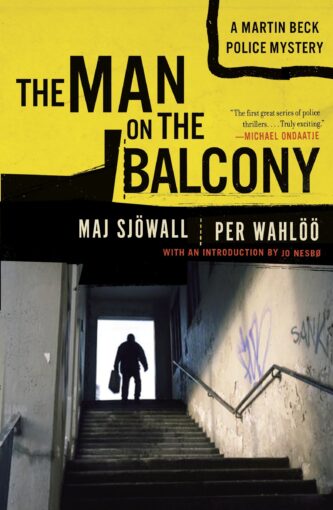

If we say that the Martin Beck series, which is regarded as the basis of Swedish crime fiction, has affected the whole Nordic crime fiction culture, it wouldn’t be an exaggeration. For example, the writer Stieg Larrson, who is widely read all over the world with the Millennium series, states that he was impressed by this series because of its approach to society and crime. In another example, one of today’s most popular writers, Jo Nesbo describes the series as “the touchstone of Scandinavian crime”. The creator of the Wallander series, which is an indispensable character for me as it is for most readers, Henning Mankell says that Martin Beck series is the series that has impressed him most. You can hear this sentence from the Rebus series’ writer Ian Rankin as well. The writers from many different countries, different geographies and therefore different cultures were influenced by this series when creating their own works.
Why the Martin Beck Series is Still Important in 2020?
After 55 years, we’re in a country far away from Sweden… We wanted to make this series the cover of our magazine’s first issue in 2020 with great excitement as the Martin Beck series started to be published in our language many many years later. But why? Why should we want to make the 221B readers read these murders and the detectives investigating them through the years without DNA analyzes, mobile phones, computers, internet, security cameras? Now these methods get old, now it is considered a prerequisite for crime fiction to explain everything within a high tempo and high rhythm. So that even the characters and the reasons of crime don’t matter to most writers and readers. Aren’t faster crime fiction and more intelligent crimes more acceptable today?
We can respond to these thoughts what arise in many of us with what Kollberg was thinking after he visited the mother of the little girl who was killed in the novel The Man on The Balcony:
…He also reflected upon the society which was gansterized in a rapid pace. In the last instance, everyone, including him, had a finger in this. He thought about the technological development that took place in the police department just last year; nevertheless, the crimes being committed were always one step ahead. While thinking about new investigations techniques, computers and the fact that maybe thanks to all of these, the criminal might be caught in a couple of hours, he reminded himself of the fact that how little solace would these give to the women whom he left a while ago. Or how much solace would these provide him with? What could this technology say to the serious faced men, gathered around the little body which lay among stones on the bushes behind the red fence?…3
Yes, due to scientific and technological advances, we no longer have to wait for weeks like Martin Beck and his team to find a photo of a murder suspect. We’re living in an age where even a late answer to an SMS can’t be tolerated by us. But we are in the years and a reality when inequality between people, poverty, femicide, child abuse, child murders, anti-immigration, workplace homicides have increased and become more normal than they were 55 years ago. Violence and crime are very close to us in our daily lives, but few of us think about the real reasons for these crimes and solutions to them. Wahlöö and Sjöwall started writing 55 years ago in Sweden, the image of which is “a welfare society”, to tell people about the inequality in the society and the social motives for crime and to ensure that these are spoken. They worked on a format that everyone could read comfortably. They wrote in a great discipline and responsibility. In short, Wahlöö and Sjöwall deserve to get more readers now because of the same reasons with which they started to write. Their novels should be read more and be read with the knowledge that there is more in them than merely a crime fiction narrative.



